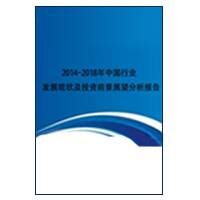意法半導體與LG化學合作開發汽車鋰電池
http://www.xibaipo.cc 2008-12-15 11:37 中企顧問網
本文導讀:意法半導體與LG化學合作開發汽車鋰電池,提供能源礦產、石油化工、IT通訊、房產建材、機械設備、電子電器、食品飲料、農林牧漁、旅游商貿、醫藥保艦交通物流、輕工紡織等行業專業研究報告
The battery pack combines LG Chem’s li-ion battery technology with a battery-management chip manufactured by ST using the company’s proprietary BCD (Bipolar-CMOS-DMOS) technology.
STMicroelectronics has teamed with Korean chemical company LG Chem for an automotive battery pack that the two companies claim significantly extends the potential of electric and hybrid electric vehicles (HEV), reducing both petrol consumption and CO2 emissions.
HEVs typically use batteries based on nickel metal hydride (NiMH) technology, which use simple control circuits but are heavier and operate at lower voltages. The two companies noted that lithium-ion (li-ion) batteries, widely used in portable consumer electronic equipment, offer a solid energy-to-weight ratio at more than twice that of NiMH batteries, with a very low self-discharge while not in use. However, their use in higher power applications has so far been limited because the charge/discharge cycle of li-ion batteries must be carefully managed to protect the batteries from abuse condition, the companies said.
The battery pack takes specific aim at that issue by combining LG Chem’s li-ion battery technology with a battery-management chip manufactured by ST using the company’s proprietary BCD (Bipolar-CMOS-DMOS) technology. As described by the European chip giant, the BCD technology combines digital logic circuits, analog measurement circuits, and power-handling transistors in one silicon chip. A battery-management system with these chips accurately controls the charging and discharging cycles of the battery to ensure safe operation and long battery life, according to the companies.
“Accurate and reliable control of the battery charging and discharging cycles makes li-ion technology applications the established choice for low-power consumer applications, as well as a leading contender for future high-power,” said MH Kim, VP of LG Chem's Battery Research Institute, in a statement today.
Each ST chip can handle up to 10 li-ion cells and also includes an interface for communicating with other ST battery-management chips in a system. With that communication capability, as many as 32 battery-management chips can be connected in cascade to manage batteries that deliver up to 1600V to the electric motors, according to ST.
“Reducing the consumption of fossil fuels and carbon-dioxide emissions is an integral part of ST’s product development strategy,” said Marco Monti, a general manager within ST's automotive product group' power train and safety division, said in the statement. “We are proud that we’ve been able to adapt our power management and analog expertise with LG Chem to create a new solution that will enable li-ion batteries to address increasingly higher power applications, from e-bikes to the most demanding public transport vehicles.”
STMicroelectronics has teamed with Korean chemical company LG Chem for an automotive battery pack that the two companies claim significantly extends the potential of electric and hybrid electric vehicles (HEV), reducing both petrol consumption and CO2 emissions.
HEVs typically use batteries based on nickel metal hydride (NiMH) technology, which use simple control circuits but are heavier and operate at lower voltages. The two companies noted that lithium-ion (li-ion) batteries, widely used in portable consumer electronic equipment, offer a solid energy-to-weight ratio at more than twice that of NiMH batteries, with a very low self-discharge while not in use. However, their use in higher power applications has so far been limited because the charge/discharge cycle of li-ion batteries must be carefully managed to protect the batteries from abuse condition, the companies said.
The battery pack takes specific aim at that issue by combining LG Chem’s li-ion battery technology with a battery-management chip manufactured by ST using the company’s proprietary BCD (Bipolar-CMOS-DMOS) technology. As described by the European chip giant, the BCD technology combines digital logic circuits, analog measurement circuits, and power-handling transistors in one silicon chip. A battery-management system with these chips accurately controls the charging and discharging cycles of the battery to ensure safe operation and long battery life, according to the companies.
“Accurate and reliable control of the battery charging and discharging cycles makes li-ion technology applications the established choice for low-power consumer applications, as well as a leading contender for future high-power,” said MH Kim, VP of LG Chem's Battery Research Institute, in a statement today.
Each ST chip can handle up to 10 li-ion cells and also includes an interface for communicating with other ST battery-management chips in a system. With that communication capability, as many as 32 battery-management chips can be connected in cascade to manage batteries that deliver up to 1600V to the electric motors, according to ST.
“Reducing the consumption of fossil fuels and carbon-dioxide emissions is an integral part of ST’s product development strategy,” said Marco Monti, a general manager within ST's automotive product group' power train and safety division, said in the statement. “We are proud that we’ve been able to adapt our power management and analog expertise with LG Chem to create a new solution that will enable li-ion batteries to address increasingly higher power applications, from e-bikes to the most demanding public transport vehicles.”







